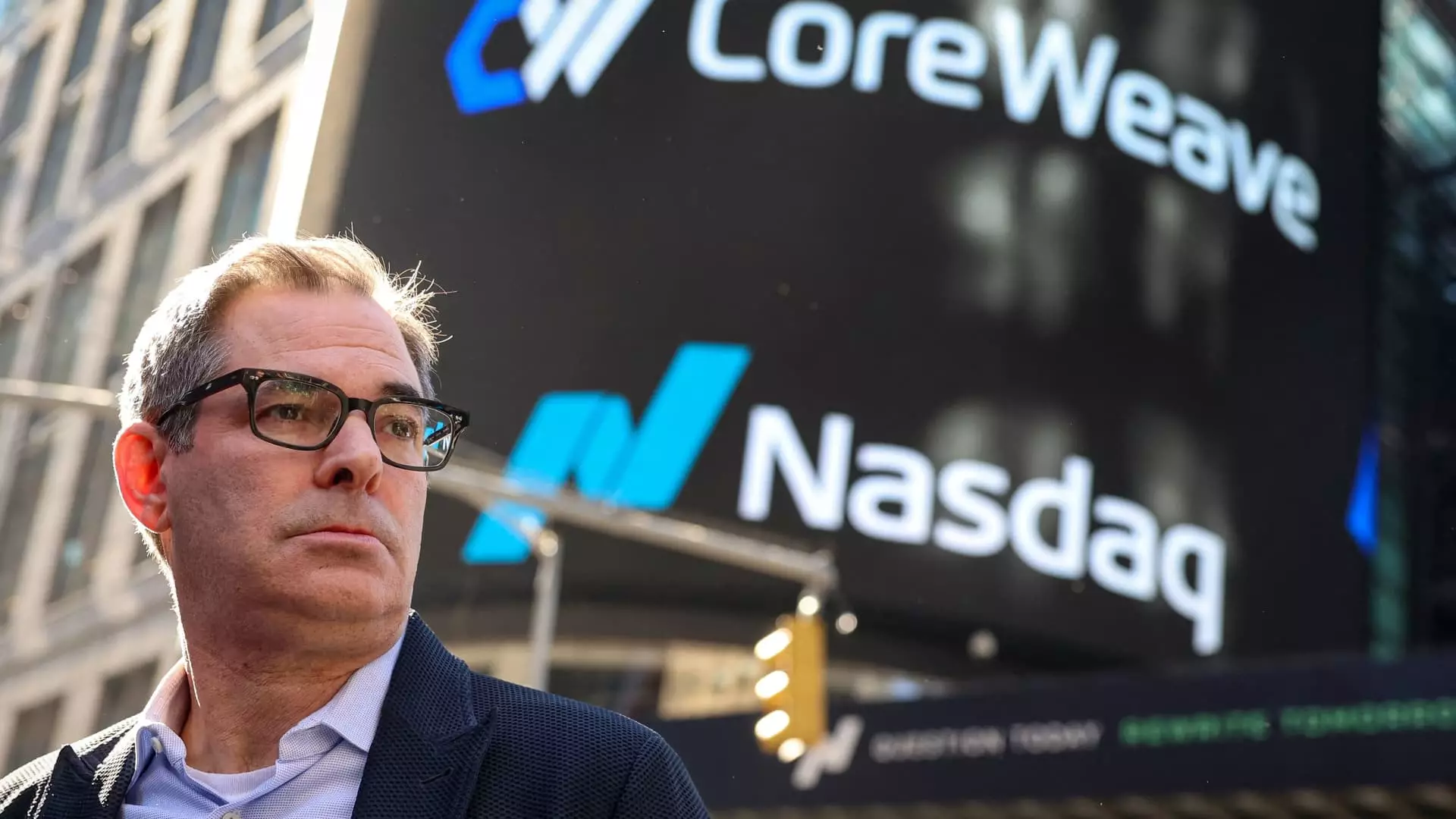In an age dominated by artificial intelligence (AI) advancements, companies that provide the infrastructure for these technologies are becoming linchpins of the digital economy. CoreWeave, a notable player in this transformative landscape, recently revealed its ambitious expansion plans post its market debut in March, showcasing a growth strategy heavily contingent on hefty capital expenditures. While the rapid surge in revenues reflects a burgeoning market, the financial health of CoreWeave, laden with significant debt, poses intriguing challenges that deserve careful examination.
Ambitious Capital Expenditure Plans
CoreWeave’s latest earnings report left industry analysts scrutinizing its ambitious forecast of $20 billion to $23 billion in capital expenditures for the year—far exceeding initial predictions. CEO Michael Intrator attributed this increase to surging demand from high-profile clients, suggesting that the expansion isn’t merely speculative but a response to existing and urgent market needs. While such enthusiasm is laudable, the investor community is divided, raising legitimate questions regarding the sustainability of such growth. Is CoreWeave racing toward a cliff masked by rapid revenue growth, or is this a calculated risk with significant long-term payoffs?
Investor skepticism revolves around the growing debt that accompanies such extensive capital outlays. For a company heavily reliant on the technology rented out to clients like Microsoft and Nvidia, the question of balancing cost with returns is pivotal. Current stock fluctuations reflect this uncertainty, as shares danced erratically around the zero line—a response to the dual pressures of rising expectations and financial reality.
Pressure Points and Skepticism
Despite the compelling income figures, with revenues reportedly soaring by a staggering 420%, CoreWeave has also posted a significant net loss that cannot be ignored. The widening losses, tied to hefty stock-based compensation and debt servicing, beg the fundamental question: at what point do growth ambitions become unsustainable? DA Davidson’s Gil Luria made a noteworthy downgrade on the stock, arguing that the company’s current approach may ultimately prove detrimental. These sentiments highlight an essential tension within the thriving AI sector—can extraordinary growth be reconciled with the slow grind of economic prudence?
This duality represents a broader issue within the tech landscape where many chase short-term gains at the risk of long-term viability. The noise around CoreWeave’s financial strategy raises palpable concerns about whether the organization is merely “meeting short-term demand,” rather than laying the groundwork for a robust future. The very essence of a sustainable enterprise rests upon the balance of investment, revenue generation, and the capacity for steady demand.
The Allure of AI and the Riddle of Demand
CoreWeave finds itself amidst a booming AI market, which is fundamentally altering industries across the board. With key partnerships like that of OpenAI—committing to substantial multi-billion-dollar deals—it paints a promising picture of market interest. However, the slew of new risk factors tied to operational capacities and market expectations complicates this narrative. Analysts are quick to ponder if this growth is truly reflective of enduring demand or merely the hype-kissed surge of a technology that remains largely untested in many applications.
While projecting revenues between $4.9 billion to $5.1 billion seems like a beacon of hope, it is worth pondering the implications of chasing this growth at breakneck speed. What happens when the novelty of AI chips subsides, or economic conditions shift? Are the short-term contracts with tech giants a long-term strategy, or might they also reveal a façade of stability in a landscape vulnerable to disruption?
Innovation vs. Financial Prudence
As CoreWeave navigates the murky waters of rapid growth, the juxtaposition of innovation and financial prudence becomes strikingly evident. The firm rests on the crux of burgeoning demand while carrying the burden of expansive debt—a balancing act reminiscent of a high-stakes tightrope walk.
Investors must grapple with these contradictions as they evaluate the sustainability of CoreWeave’s staggering growth trajectory. The road ahead is fraught with challenges; the company must prove that it can sustain momentum without falling prey to the pitfalls that have engulfed many ambitious startups before it. The key takeaway is the dual-edged nature of their aggressive push for growth, and this raises the question: will CoreWeave emerge as a market leader, or will it become another cautionary tale in the tech arena?


Leave a Reply